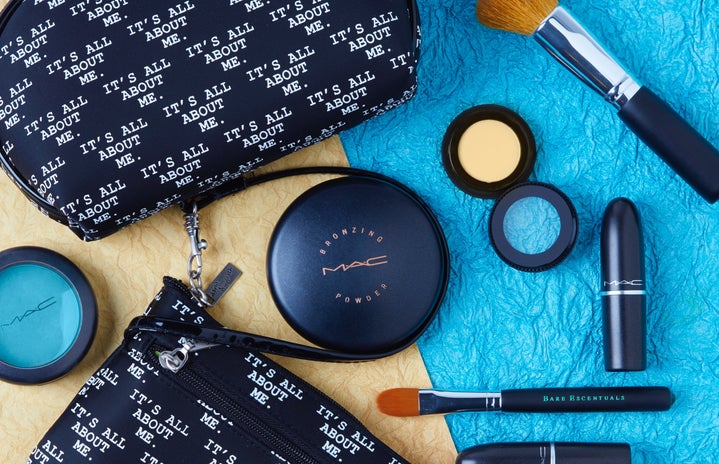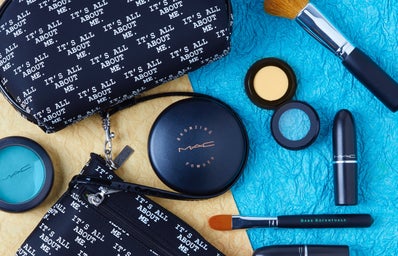Sitting in a booth of a restaurant, I’ll glance down at the breakfast menu deciding what I’m going to order. But what’s going through my mind isn’t trying to figure out what I’m in the mood for; sometimes it’s wondering how many calories are in each of the choices. The thoughts running through my head include, “I don’t want to eat more than 500 calories in one meal” or “I better get to the gym for a good workout after this”, followed by the post-meal regret of “why did I just eat that unhealthy and sugary meal?”
I know for a fact I’m not speaking for myself only, considering I’ve witnessed similar thoughts and words come from some of my friends while we’re eating together. This makes me realize, first hand and second hand, that the pressure to be skinny is something that controls girls’, and even guys’, everyday lives more than it ever has or ever should.
We live in a world that considers what you look like to be more important than who you are inside or what accomplishments you are making. Celebrity news is now about appearances rather than careers, like how Jessica Simpson lost her weight or the fact that she needed to lose it in the first place because she didn’t look “good” in a bikini. I put the word good in quotations marks because if you think about it, words such as “pretty” and “attractive” are nothing but opinions, especially when it comes to weight. So living in a generation that glorifies and strides to “perfection” makes me curious to another thought.
When did the definition of “beautiful” become so thin? (Pun intended).
According to ANAD.org, the website for the National Association of Anorexia Nervosa and Associated Disorders, The Renfrew Center Foundation for Eating Disorders states that, “The body type portrayed in advertising as the ideal is possessed naturally by only 5% of American females.” So basically the media and advertising companies are displaying the idea of “gorgeous” and “flawless” to be highly unattainable, if not impossible to the majority of America.
Even if the magazines and advertisers are not trying to depict the notion that tall and skinny is the only form of beautiful, it’s sending out that message. In “Prevention of Eating Problems with Elementary Children”, Michael Levine of USA Today reports 69% of girls, ages 11-18, have stated that pictures advertised in magazines have influenced their idea of the perfect body shape. Out of that same age group, 47% wanted to lose weight in result of magazine images.
The most frustrating part of this whole “skinny is the only beautiful” misconception going around is the use of Photoshop to alter the edits of the pictures going in magazines and advertisements to make the models skinnier and “prettier”. In the Huffington Post, Vivian Diller, Ph.D. wrote “Is Photoshop Destroying America’s Body Image”, and quoted Jeff Schewe of Photoshop News saying, “We have wonderful tools to create images, new digital cameras and photographic digital printers and powerful tools such as Photoshop and we are expected to do what – nothing? I don’t think so.”
To me, Schewe is implying that he believes photo editors need to use Photoshop because he thinks the models have to be skinnier and prettier. But who is the judge of what’s “beautiful” or “gorgeous”? One person cannot define what is “beautiful”, especially based on weight. In other words, “beautiful” is nothing but a social construct and opinion that will vary from person to person.
So why is the desire for changing the body shapes of models and celebrities even necessary? If you think about it, editing a model’s photo to make her look skinnier or adding makeup to make her more attractive is insulting.
Imagine looking at a picture of your on the cover of a magazine and not even recognizing yourself. The Youtube account BuzzFeedVideo made a video after they selected a group of non-famous women to be shot by a photographer and edited as if they were going to be “cover models”. While looking at the end result, comments such as, “It doesn’t even look me” were made. “You look at yourself and you know you can never attain that ideal,” one of the women said.
This generation is constantly promoting the need to be skinny, but when did the two words beautiful and skinny begin to be complementary? While browsing the Internet, I found pictures of vintage newspaper ads encouraging women to gain weight. Back in the day, women felt insecure for being skinny and wanted to have a fuller figure. Nowadays, a woman is looked down upon and isn’t as “beautiful” as a skinny woman.
According to the Merriam Webster dictionary, the word “beautiful” is defined as “generally pleasing”. This description does not mention anything about weight or physical appearance of a person at all, so how did the idea of thin being the only “beautiful” even come about?
So in reality, skinny, curvy and full-figured are all considered “beautiful” because beauty does not have a weight limit, and women and men should not have to bear the pressure to be skinny in order to feel like they are important and loved in this world.

